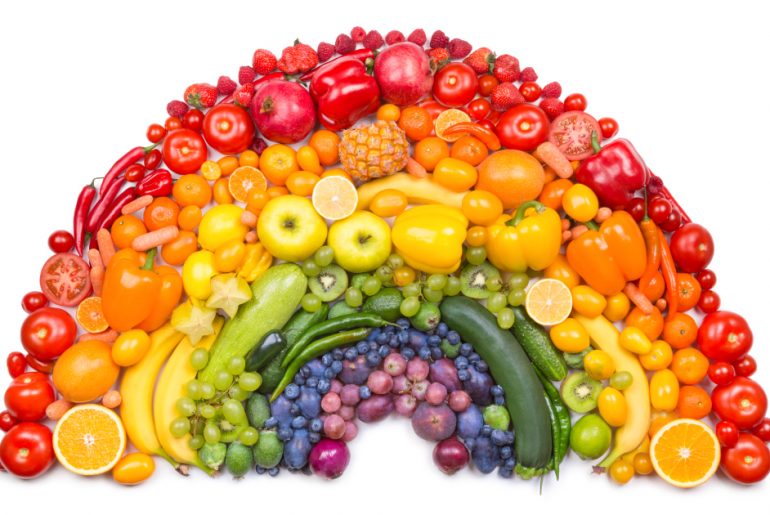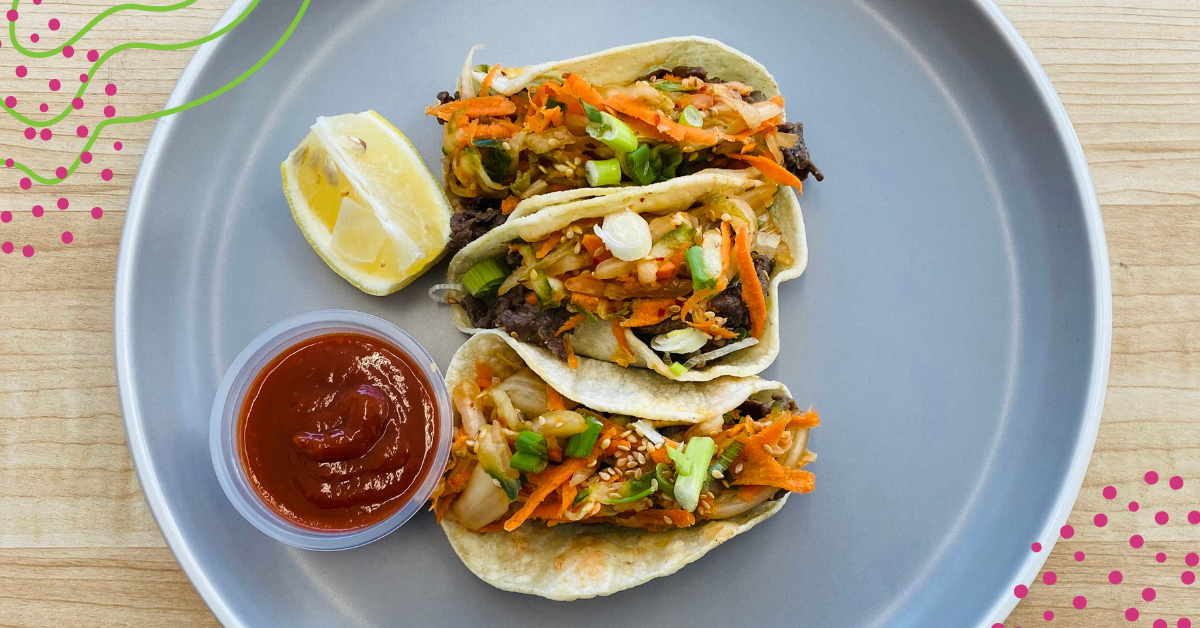Our animal instinct leads us to prefer foods with warm colors, think yellow, red, and orange. However, even those of colder colors, such as blue and purple are also just as important. You probably heard the famous phrase: “Eat the rainbow”, and there’s a pretty good reason why that statement is essential.
A varied diet is the key to providing our body with the proper nutrition it needs on a daily basis. However, sometimes we may have a hard time knowing just how much of each type of nutrient we need, and that’s where understanding the nutrition of our foods can help you along the way. So, today we have gathered all the perks of each of the colors of nature’s food palette. Are you ready to eat the rainbow?
Let’s see what the rainbow of food has to offer to your health:
Below there’s a list containing all the benefits of each color group: Yellows, purples, reds, greens, and even whites.
Yellow and Orange
There’s so much to expect from colors that represent youth, joy, vitality, light, and the sun. Yellows and oranges in both fruits and vegetables are a good indicator of high content of Vitamin C, which stimulates the production of collagen, keeps the skin smooth and young, and our joints and ligaments strong. Hence, including yellow and orange foods is vital.
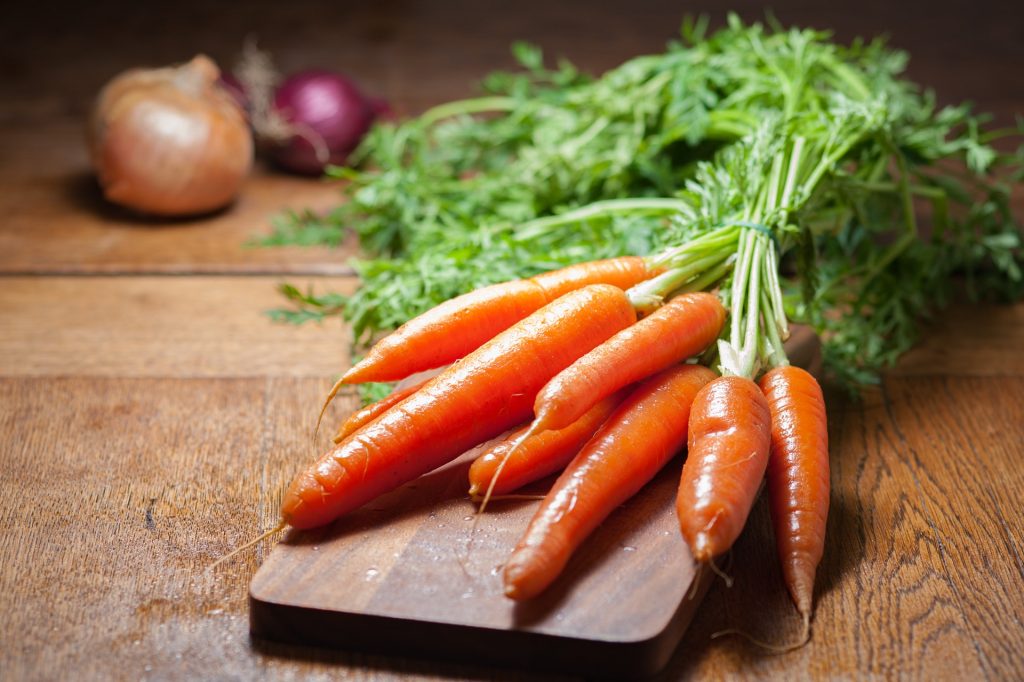
When we think of orange we automatically think of oranges, carrots, and sweet potatoes, right? Well, we owe this vibrant color to the beta-carotenes present in those foods. This is, perhaps, the most important property of these foods, since our body transforms it into vitamin A.
Carrots, pumpkin, mangoes, pears, and peaches are just some of the foods that provide us with quality nutrients, such as beta-carotene and also flavonoids. The latter offers antioxidant functions, reinforces the benefits of vitamin C, slows down degenerative processes, and protects the heart.
Keep it orange with our pick: Veg Buddha Bowl
Green
They say the darker, the better. And that probably stems from the fact that dark leafy greens are among the best sources of nutrition. Besides, the green team is probably the largest among vegetables. So, without even giving it too much thought, whenever we think of “green” we instantly relate the color to “health”, and for a good reason.
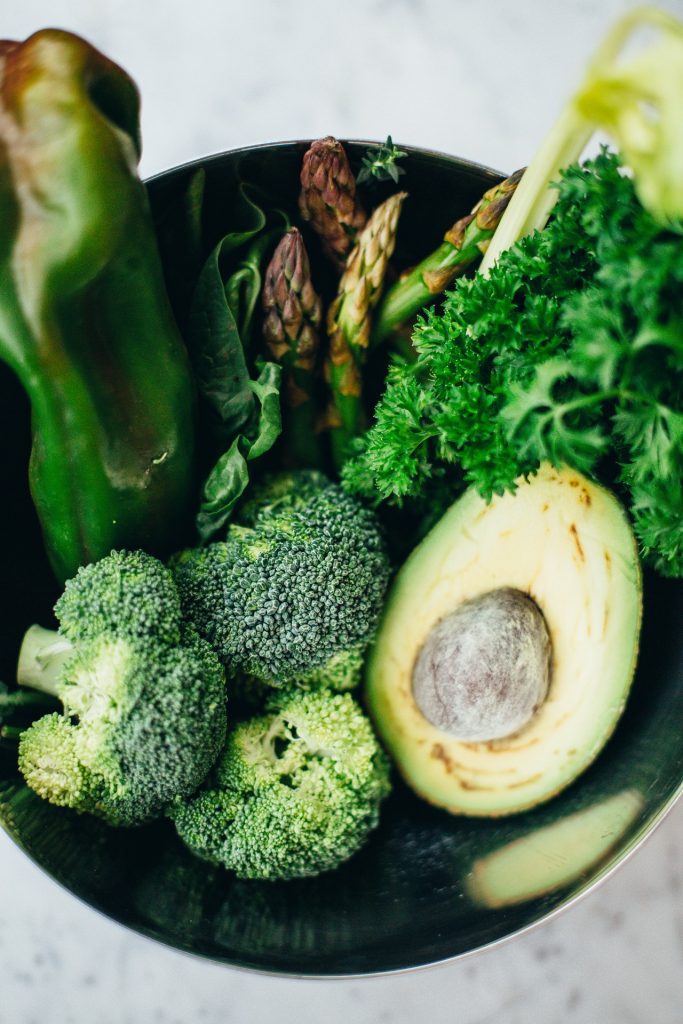
Green vegetables are rich in vitamins A, C, E, and K. But, that’s not all, some green vegetables are also rich in B-vitamins, such as broccoli and spinach. Among the big family of greens, we can find all sorts of fruits and vegetables, from kiwis to avocados, to leafy greens, asparagus, and cruciferous vegetables like broccoli and kale.
What’s more, these vegetables are usually rich in lutein – a powerful antioxidant, but also high in folic acid, magnesium, fiber, and potassium. These vegetables are also rich in carotenoids-antioxidants that protect the cells. According to recent studies, these antioxidants play a key role in tackling the early stages of cancer. Furthermore, greens are very low in calories, so they are ideal to load up on if you’re trying to lose weight.
So, if you don’t know exactly what foods you can include in your diet to make green taste delicious, you can try our Organic Soba Noodles!
White
There’s plenty of foods included in this color range: garlic, cauliflower, onions, parsnips, leek, cabbage, and potatoes, to name a few. White vegetables and fruits provide us with phytochemicals such as alkynes, anthoxanthins, and inulin. These vital nutrients help us maintain low blood pressure, fight infections, and act as food for our good gut bacteria. Most white vegetables are important sources of prebiotics. Prebiotics nourish a group of microorganisms that populate the intestine, which helps us keep safe from viral and bacterial infections.
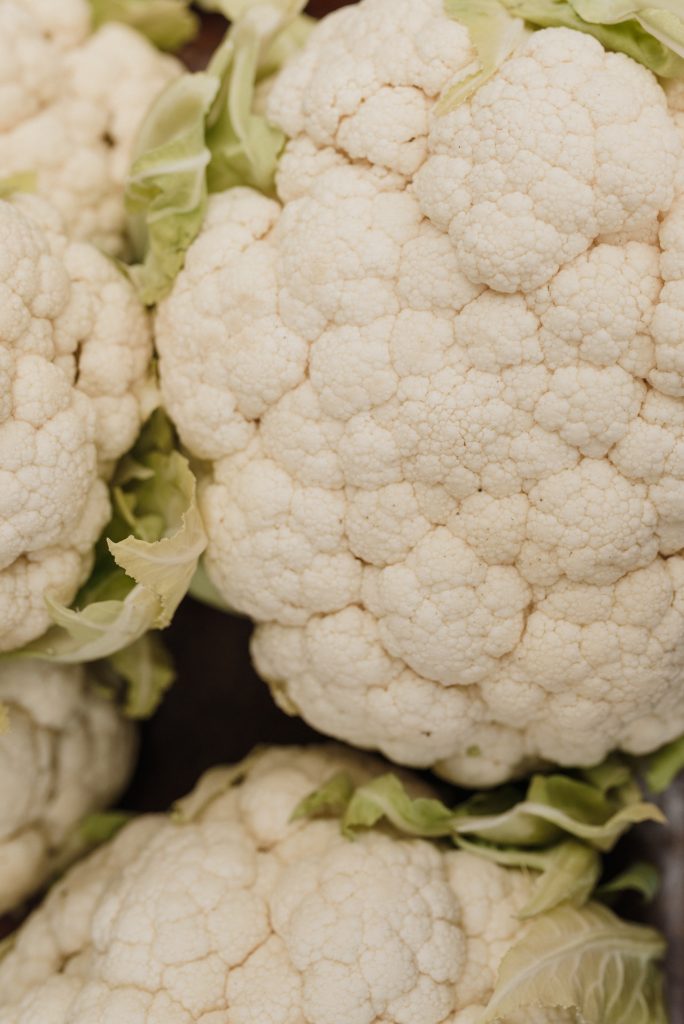
Unfortunately, white vegetables are normally forgotten, as the brightest colors of the rainbow tend to get all the fame. However, the variety of fruits and vegetables that falls into this category is quite large. But, even if you think your white vegetables are not pretty much Instagram-worthy, clear those ideas from your mind, because white vegetables and fruits have much to offer from vitamins, minerals, and phytonutrients that are essential to your overall health.
This group of vegetables is a good source of vitamin C and group B vitamins, potassium, and magnesium, as well as phytochemicals like potassium, magnesium, fiber, and antioxidants. They also help reduce cholesterol levels, lower blood pressure, prevent type II diabetes. So, next time remember: Don’t judge a vegetable by its color, especially if you can make our Chickpea with cauliflower and potato bowl out of it!
Red and Purple
Bright and eye-catching, red foods evoke passion and exoticism. But besides from its vibrant and bright tempting colors, this group has a lot to offer. Fruits and vegetables like apples, red bell peppers, strawberries, pomegranates, tomatoes, grapes, blueberries, raspberries, blackberries, and eggplants are just a few examples of this wide range of nutrient-rich goodies.
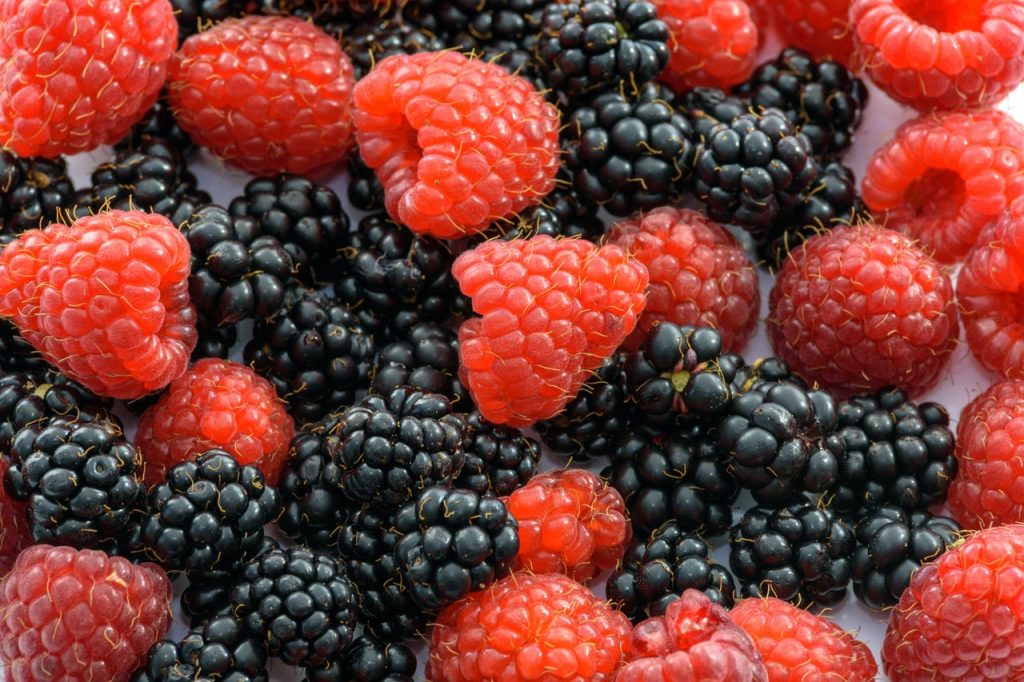
Foods of this color are another source of vitamin C, magnesium, and phytochemicals. But above all, they contain lycopene, a type of carotenoid, which has been the subject of various studies for its many great qualities.
However, the darker varieties, such as blueberries and blackberries are rich in anthocyanins, which according to recent studies, seem to improve cholesterol levels and help regulate blood sugar levels. Anthocyanins are the component that gives these fruits and vegetables their distinctive red or purple color. But, that’s not all it does! These nature miracles can also help protects us, and even fight, oxidative stress, a process that’s known for promoting cardiac disease, Alzheimer’s disease, and other neurodegenerative complications.
Both red and purple foods are essential to our heart health, but also, to maintain a good memory and stay focused throughout the day. With today’s distractions, it can be hard to stay laser-focused on work and our daily tasks, with so much to do, so many emails to respond to, and dozens of notifications that make it even worse. In this sense, this compound called lycopene, in addition to protecting our cardiovascular system has a protective role against various types of cancer, research shows.
So, next time you try our Breakfast Sandwich, or our Impossible Tacos don’t forget that you’re not just eating a delicious meal, you’re also contributing to your long-term health.
How to eat by colors
Now that you know exactly what’s on your plate when you see a colorful and vibrant Instagrammable meal, let’s see how you can implement this into your daily routine. We know how hard it can be to cook all your meals for the day. Not only this can take hours away from our day, and we know how busy people are today. No matter if you’re in a lockdown or if you’re on the go. Apparently staying at home ended up being much more demanding than we thought it could be, so yes, unfortunately, staying home does not equal more time to prepare our healthy meals.
However, that’s where we come in, to save you some time, so you can still nurture your body and stay on track, depending on your goals. So, today we wanted to take this opportunity to share a few ideas on how you can eat the rainbow just a few clicks. Are you ready?
The trick to keep eating healthy meals consistently is meal prep. We know, you heard it all over the internet, so we don’t need to go over just how wonderful it is. But you know it, it saves time, money, and the best thing is you don’t have to clean after cooking. Who doesn’t want that? But, the key to successful meal prep is thinking of the week ahead and understanding how to build your weekly meals.
As a general rule, and as you probably imagine by now, the more colors we add to our diet, the healthier we will be eating. So, while you can always choose one of our pre-determined plans, you can still make your own or find alternatives. Sometimes you’ll see you can swap meals in case you don’t like that option. However, when swapping it, you need to see the big picture. Are you including enough vegetables and fruits? Are you providing your body with enough vitamin C, how about vitamin B?
Now, before you read this article, this could have been harder to guess. But now, as a general rule, you can guide yourself by the colors of your meals. This is easy to deduce after examining the main color groups. And, it goes without saying that we are talking about colors found naturally in food, not artificially colored and processed foods, which is great because that is exactly what you can find here.
However, here are a few tips that will help you along the way:
- Choose fruits and vegetables in season.
- Choose a vegetarian dish from time to time to load up on vegetables and fruits.
- Looking for a snack? Choose a piece of fruit!
- Be original when combining vegetables. The more variety, the better.
- Make sure that at least a quarter of your plate is vegetables, this can be a salad, steamed spinach, broccoli, potatoes, you name it!
As you can see, eating by color is an easy way to eat healthily. Not only is it going to help you achieve your goals, lose weight or maintain weight or build muscle while staying lean, but it can also help you live a longer and healthier life. We hope did you have learned something today and that this information helps you make better decisions for your nutrition from now on. And remember – eat the rainbow and don’t judge food by its color. Bon appétit!


